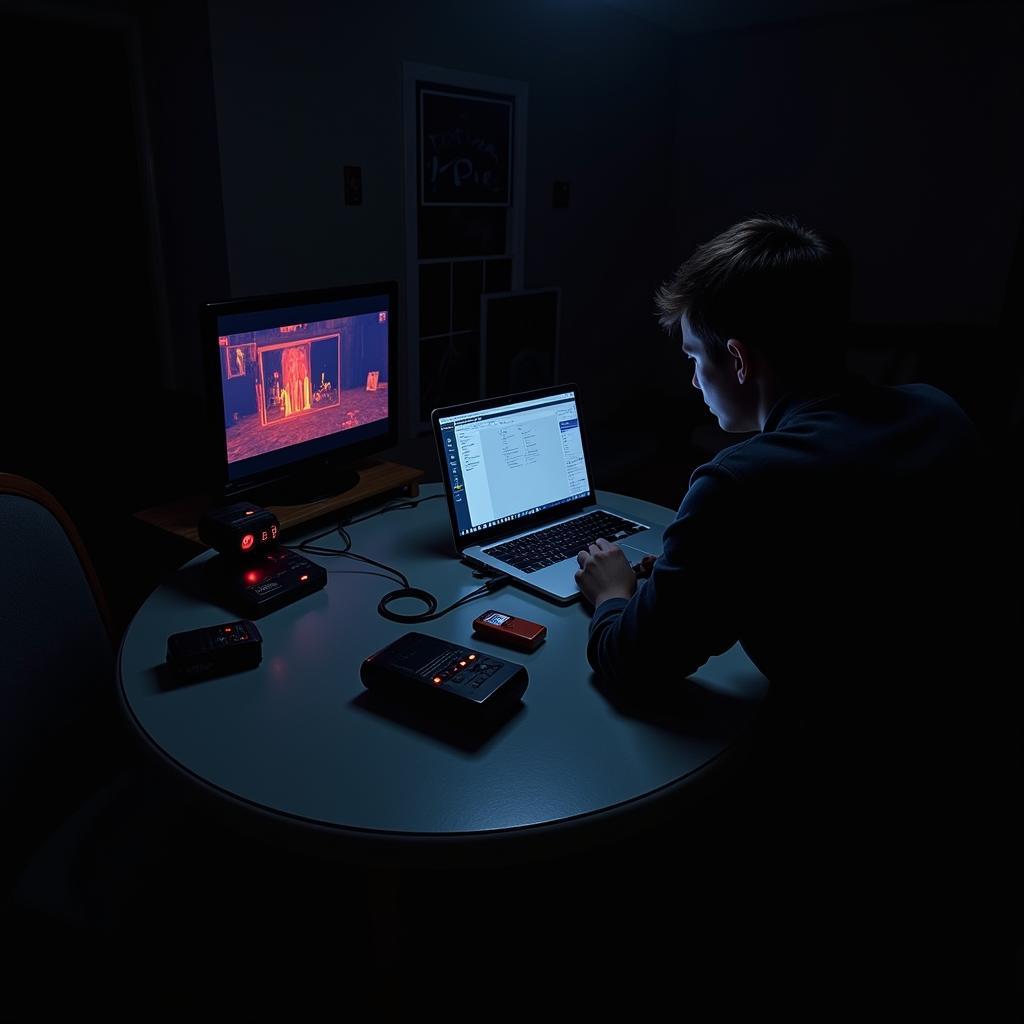The “Big 6 Research Model” is a powerful tool for navigating the often-murky waters of paranormal investigation. This systematic approach provides a framework for approaching research in a structured and effective way, ultimately leading to more insightful and credible findings. Whether you’re a seasoned ghost hunter or a curious newcomer, understanding the Big 6 can significantly enhance your investigative process.
Breaking Down the Big 6 for Paranormal Research
The Big 6 Research Model, originally developed for information literacy, translates seamlessly to the realm of the paranormal. It consists of six stages:
1. Task Definition: Defining Your Paranormal Puzzle
Just like any scientific endeavor, paranormal research begins with a clear question or problem. Are you investigating a haunted house with a specific history? Or are you exploring the possibility of electronic voice phenomena (EVP) in a particular location? Clearly defining your research question will guide your entire investigation.
2. Information Seeking Strategies: Where the Clues Hide
Once you’ve identified your target, it’s time to gather information. This stage delves into historical records, eyewitness accounts, and any existing research on the subject.
- Historical Records: Local libraries, historical societies, and online archives can offer valuable insights into a location’s past, potentially revealing past tragedies or unexplained events.
- Eyewitness Accounts: Interviewing people who have experienced paranormal activity at the location can provide firsthand narratives and potential leads.
- Previous Research: Consulting prior paranormal investigations, books, or documentaries can offer valuable context and prevent redundancy.
 Paranormal Research Information Sources
Paranormal Research Information Sources
3. Location, Location, Location: Accessing and Evaluating Information
This stage involves critically evaluating the information you’ve gathered. Not all sources are created equal.
- Source Credibility: Is the information coming from a reputable source? Are the eyewitness accounts consistent? Always cross-reference and verify your findings.
- Bias Detection: Be aware of potential biases in the information. Personal beliefs, sensationalism, or even financial incentives can color the way information is presented.
- Data Analysis: Look for patterns, connections, and anomalies in the data.
4. Use of Information: Putting the Pieces Together
Now, it’s time to organize and synthesize the information. Create timelines, maps, or charts to visualize the data. This stage often involves:
- Correlating Events: Are there any links between historical events and reported paranormal activity?
- Identifying Trends: Are there common elements in the eyewitness accounts?
- Developing Hypotheses: Based on the gathered information, formulate possible explanations for the phenomena.
5. Synthesis: Drawing Meaningful Conclusions
This stage is where you interpret your findings and draw conclusions. Can any of your hypotheses be supported by the evidence? Are there alternative explanations? Remember, a lack of definitive proof doesn’t necessarily disprove the existence of paranormal phenomena. It might simply highlight the need for further investigation.
 Using Tools in Paranormal Investigation
Using Tools in Paranormal Investigation
6. Evaluation: Assessing the Effectiveness of Your Paranormal Investigation
The final stage involves reflecting on the entire research process.
- What worked well?
- What could be improved?
- Did your research answer your initial question?
This stage encourages a critical assessment of your methods and helps refine future investigations.
The Big 6: Your Key to Unlocking the Paranormal
The Big 6 Research Model provides a systematic and structured approach to investigating the unknown. By approaching paranormal research with this framework, investigators can enhance the credibility of their findings and contribute to a deeper understanding of the mysteries that lie beyond our current understanding.
FAQs: Demystifying the Big 6 Research Model
1. Can the Big 6 Model be used for all types of paranormal research?
Absolutely! Whether you’re investigating ghosts, UFOs, or cryptozoological creatures, the Big 6 provides a valuable framework for any paranormal investigation.
2. Is the Big 6 Model only for experienced investigators?
Not at all! Beginners can greatly benefit from the structure and guidance the model offers. It helps avoid common pitfalls and encourages a more systematic approach.
3. How long does it take to complete a paranormal investigation using the Big 6?
The time frame varies depending on the complexity of the case. Some investigations might take weeks, while others could span months or even years.
Seeking Answers in the Unexplained?
For more insights into Paranormal Research methods and intriguing case studies, check out our other articles:
If you need help unraveling a paranormal mystery or require expert assistance, don’t hesitate to contact us. Our team of experienced paranormal investigators is here to help.
Contact Us:
Phone: 0904826292
Email: research@gmail.com
Address: No. 31, Alley 142/7, P. Phú Viên, Bồ Đề, Long Biên, Hà Nội, Việt Nam
Our dedicated customer support team is available 24/7 to assist you.